Contents
Any company with an app wants the same thing. “Satisfied users?” “More revenue?” you may ask. Sure, those are important, but to reach those goals, first, you have to get people to download your app. Possibly the goal would be to have more and more people installing it weekly, keeping a steadily and rapidly increasing growth. The million-dollar question is: how to increase app downloads? What are the exact measures you can take in order to get people to discover and decide that your app is worth to get?
Why aren’t you having enough app downloads? Getting to the core problem.
I don’t intend to go into details about how to tweak your meta-description, title, and keywords in order to increase visibility in the app stores as there is a whole sub-field dedicated to this, called App Store Optimization (ASO). There are even dedicated tools that can help you with this aspect. However, in this article, I’d like to take the users’ point of view and map out the underlying mental steps of downloading an app.  This is more essential than you would imagine. You won’t go far without knowing your users, their needs, and their train of thought while choosing a solution for their problem. Only tweaking the keywords is just not enough.
This is more essential than you would imagine. You won’t go far without knowing your users, their needs, and their train of thought while choosing a solution for their problem. Only tweaking the keywords is just not enough.
So below I’ll list steps of this process from the viewpoint of the user, with key points you should pay attention to. These are paramount for reaching your ultimate goal: increasing app downloads.
Many say, and we also do when we are done with a UX redesign project supported by user research, that you have to raise awareness and put a real effort into marketing too. Because it doesn’t matter how well-designed your app is, if you don’t promote, no one will download it.
But this is true the other way around as well: it doesn’t matter how well promoted, marketed, and optimized your app is for findability, if it is not well-designed, and doesn’t solve real user needs no one will download it.
Defining your app’s value proposition comes first
As a user experience researcher at a UX agency, I can go into details regarding this latter part – how to have a firm and well-defined value proposition and how to make it come through on your app page.
We’ll get right into that. Before though, let me ask a few questions I’d ask any client to answer and reflect on before I make blind promises to them about increasing app downloads by X percentage.
- What is the main value proposition of your app?
- Who is your target audience? Why?
- What problem of the target audience do you want to solve?
- How do you solve it?
- How is it better than existing solutions?
- What will be the outcome or gain? What can users get out of using your app?
Your prospective app users will ask the same questions, so it’s essential that you have clear answers for them. Additionally, these answers should never be hidden, but very much present and easy to decode on your app download page.
Your app might be a solution – but what is the underlying need?
To give your users these answers, first, you have to explore their motivations, pain points, contextual behaviors, and attitudes. In other words, you might be in serious need of UX research.
You just won’t know these until you ask your users and gain some insights on them, using qualitative and quantitative research methods. Everything else is just an assumption. If you want to increase your app downloads, do some research on your users’ journey and thought process.
Try to empathize with your target audience and map out what state of mind they’re already in, and what agenda they have when they get in contact with your app.
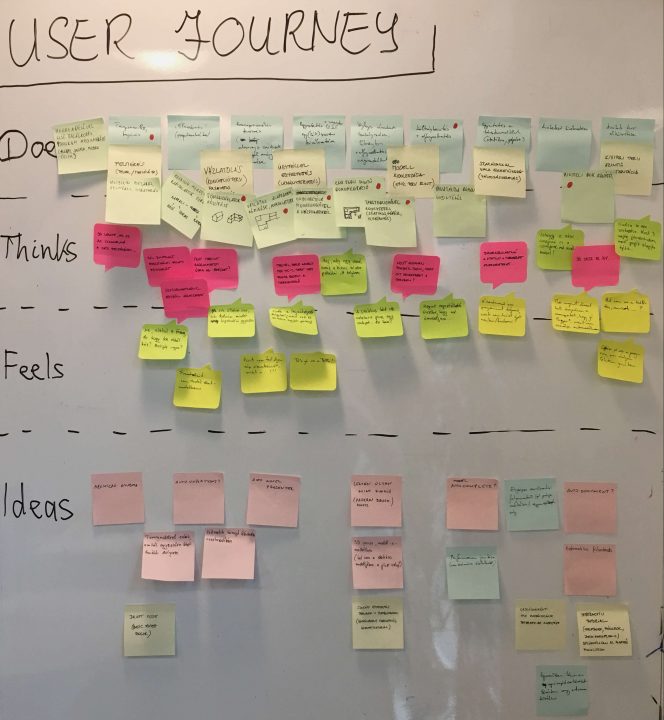
At UX Studio we believe that reaching customers and mapping their pain points is one of the core values of our work. With that as the main focus, we can help you define and validate the value proposition of your app. Additionally, with that knowledge, it will be much easier to communicate the unique selling point of your app.
You should also take care of your brand’s visuals and tone of voice. If they are not reflecting your app’s true value or the job to be done of the user you need to do some branding or even a complete product redesign. Punctual and detailed UX research can you help in this too.
How to test the performance of your app download page?
There are also a few ways to test your user’s impressions once they have found your app.
For instance, you can check how your app page appears in the store in a five-second test. In this test, the screen is shown to the user for five seconds and then you can ask them to create a list about the apps they remember from the screen and why did these applications stand out. The five-second test can be used in a different way as well: you can also ask the users to list a few adjectives that come into their mind after five seconds of looking at the app detail page. 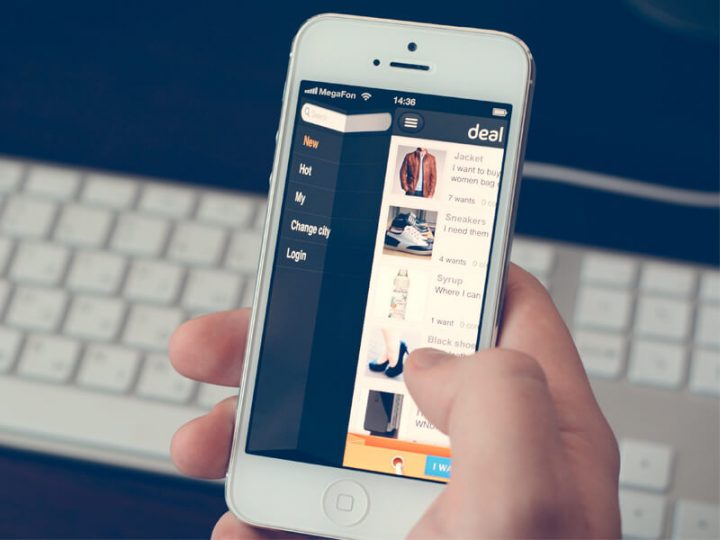 Another way to go is by including the discoverability and the evaluation of the app in the app store in your usability test where you apply a think out loud protocol too. It’s simple.
Another way to go is by including the discoverability and the evaluation of the app in the app store in your usability test where you apply a think out loud protocol too. It’s simple.
Don’t just start on the onboarding screen, but include the steps of finding, evaluating, and then installing and opening the app for the first time. You can even include these steps in your prototype if you’re not testing a live app.
Believe us, using the app like they’d do it at home will make the test even more natural and easier for the user. To read more about setting a scenario and applying the think out loud protocol, take a look at our ultimate guide to successful user testing.
A user’s journey from basic needs to app downloads
In the following points, I’ll explain the basic journey customers go through when they are searching for an app. Additionally, I’m giving some helpful tips for those who want to increase their app’s downloads.
1. Trying to find solutions for a clear problem
To make things tangible, let’s go through a real-life example, a journey that I went through recently. A lot of people have a very common problem of forgetting to drink enough water during the day. I have that problem too. I’ve heard before that such apps exist that could make it easy for me to remember to drink water and track my progress daily, as well as in the long term.
Since I do sports a lot, a requirement for me would be something with easily adaptable goal settings. For example, on workout days I have to drink up to twice as much water as I would on resting days depending on the length and the intensity of the workout. This is my clear problem, and I am ready to find a solution in the form of an app.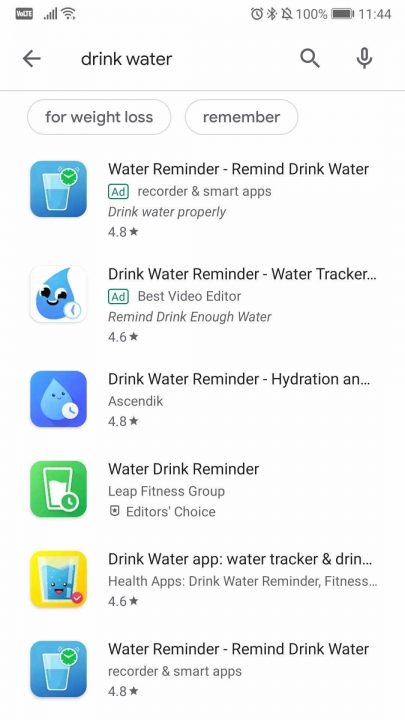 2. Choosing from a long list of similar apps aka standing out from the competitors
2. Choosing from a long list of similar apps aka standing out from the competitors
Let’s imagine that I type “drink water” in the app store, and I am presented with a selection of apps. What information do I have at first when the apps are listed?
Logo, name, developer, and rating (or “Editor’s Choice” instead) are the most crucial things. If the logo or the name of the app is not appealing, or the rating is the lowest amongst these, I’m possibly not even going to click on them to check them out. It’s also probable that I’m going to start checking whichever one is “eligible” starting from the top.
My next step is to go to the first app which is not an ad and check it out. Because of the above-mentioned reasons, I like to see the real ratings of the app, so I won’t choose the advertised ones.
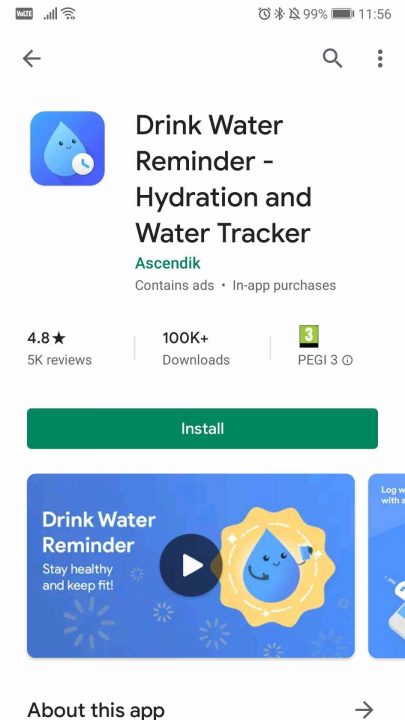
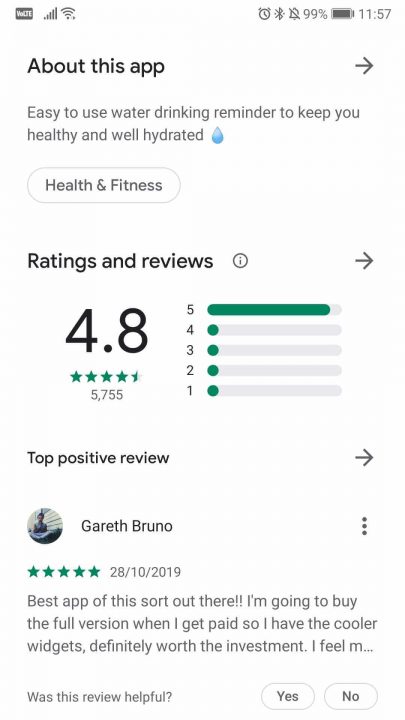
3. App detail page – Getting to know what I might expect behind the cover
What do I see here? Besides those pieces of information that I’ve seen on the listing page, here I get some more details in the form of a description under “About this app”. Furthermore, I can see the visuals uploaded, either screens or feature explanations like on onboarding screens, and sometimes – like in this case – a video.
A short informative video, if it’s made well, can really help the user to quickly evaluate if the app is what they were looking for. This did the trick in my case too. There wasn’t only the element on the design with the simple smiling but cute waterdrop but also a quick explanation of the main features.
If you choose to do a video, make sure it is short, informative, and visually engaging so that it holds users’ attention. It was proven that video content is much more engaging than plain text, so make the best of this cognitive psychological principle.
4. App Ratings – those dreaded reviews that can either entice or scare off prospective users
The other really important thing that I and many others are usually most interested in are the ratings. First, there is the numerical rating: how many stars did it get out of 5? And then comes the verbal rating: what do people say about this app? It is safe to say, the bigger the better, but I also look at the number of downloads and the number of ratings.
I wouldn’t be positively biased towards an app with a better rating but less than a thousand downloads – with that few users I don’t feel like I get the big picture by reading the only seven written ratings the app has.
5. App look and feel – hitting the right tones with your UI design
Let’s assume that I got to the point of checking some screenshots next to the video. What I see here plays a crucial role in my decision of downloading the app or not. Why? Even though how your app works is really important, as well as it is useful and usable for your target audience, there is still the magic of the first impression in which your app’s looks play a vital role.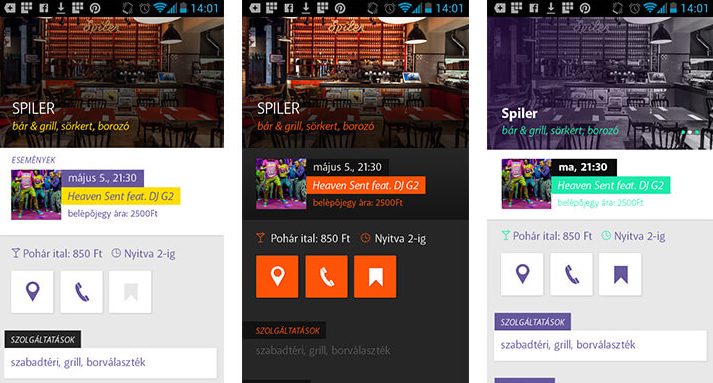
It has to resonate with the users on an emotional level so that they’ll find it appealing and desirable. To have a desirable look that hits the right notes with your potential users, the UI phase has to be done with the same careful precision and professionalism as the UX design. Of course, you’ll have to know the current UI trends, but it is also a question of your branding. So let’s not forget about proper research on your brand and your customers, and include not only the usability but the impression of the final UI as well.
6. Choosing the right app (hopefully)
The end of the story is a happy one in my case: by going through these steps and checking which app would best suit me to solve my problem of drinking the right amount of water each day, I found the best one for me. As many people do, I went with the one you can see above, with good ratings, many downloads, great features, and last but not least, a cute logo and nice design.
Getting users to rate your app
Ratings are important. That said, there are some no-go things when it comes to tirelessly pressuring the users to rate your app. Admit it, you pressed “not now” more times than you could count.
One way to get positive reviews from enthusiastic and satisfied users is by sending push notifications. But it has to happen at the right time. There is a general recommendation of only displaying it after more than five sessions. However, in some cases, you need to be very careful, like in this example below where an app for logging contractions during pregnancy probably didn’t really succeed in getting that positive review.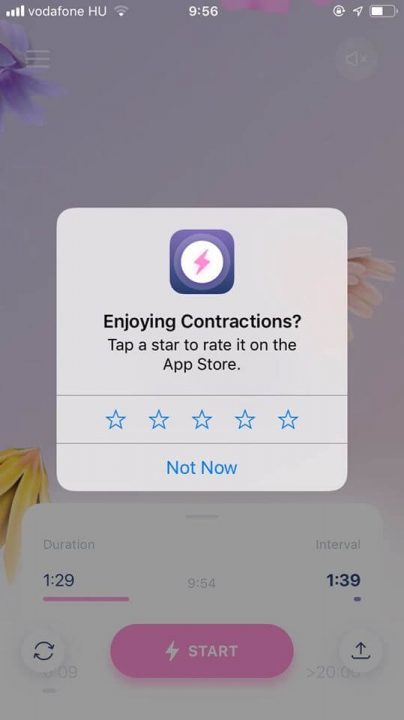 This example demonstrates how one nuanced thing, like the timing and the copy of this message prompting users to rate, can break the experience and can result in many either furious or missed ratings.
This example demonstrates how one nuanced thing, like the timing and the copy of this message prompting users to rate, can break the experience and can result in many either furious or missed ratings.
Can you imagine almost about to go into labor, measuring and logging your extreme pain, and receiving this notification to rate the app with the copy “Enjoying Contractions?” Be careful, think about the timing and the context in the usage of the app, and specify the time for these prompts and notifications.
Conclusion and takeaways:
In the end, it will come down to the main question of the user:
Does it seem like this app will solve my problem?
There is no point in sugar-coating it. In the App Store and the Google Play store, there are millions of applications to compete with. It is really hard to get noticed even if you have a unique value proposition and a very well defined target audience. This is why it is crucial to do proper user research paying attention to the mental steps and processes right from the very beginning before making your app available to the world. These are the insights that inform us on how we can craft, change, and experiment with our app’s logo, description, screenshots, and look and feel so that as an end goal we could attract more people to download it.
Remember, when you have boosted app downloads that is only half of the story. Then comes the even more difficult half: you must wow the users, keep them engaged, and deliver on the promises you have made. If you do that, your churn rate will remain at a healthy level.
Searching for the right UX agency?
UX studio works with rising startups and established tech giants worldwide.
Should you want to improve the design and performance of your digital product, message us to book a consultation with us. We will walk you through our design processes and suggest the next steps!
Our experts would be happy to assist with the UX strategy, product and user research, UX/UI design, etc.




